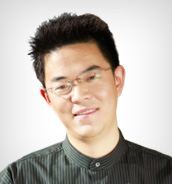Unit 11
Part Ⅱ Reading Comprehension
(35 minutes)
Directions: There are 4 reading passages in this part. Each passage is followed by some questions or unfinished statements. For each of them there are four choices marked A), B), C) and D). You should decide on the best choice and mark the corresponding letter on the Answer Sheet with a single line through the centre.
Questions 21 to 25 are based on the following passage:
It is said that the public and Congressional concern about deceptive (欺骗性的) packaging rumpus(喧嚣) started because Senator Hart discovered that the boxes of cereals consumed by him, Mrs. Hart, and their children were becoming higher and narrower, with a decline of net weight from 12 to 10 1/2 ounces, without any reduction in price. There were still twelve biscuits, but they had been reduced in size. Later, the Senator rightly complained of a store-bought pie in a handsomely illustrated box that pictured, in a single slice, almost as many cherries as there were in the whole pie.
The manufacturer who increases the unit price of his product by changing his package size to lower the quantity delivered can, without undue hardship, put his product into boxes, bags, and tins that will contain even 4-ounce, 8-ounce, one-pound, two-pound quantities of breakfast foods, cake mixes, etc. A study of drugstore(杂货店) and supermarket shelves will convince any observer that all possible sizes and shapes of boxes, jars, bottles, and tins are in use at the same time, and, as the package journals show, week by week, there is never any hesitation in introducing a new size and shape of box or bottle when it aids in product differentiation. The producers of packaged products argue strongly against changing sizes of packages to contain even weights and volumes, but no one in the trade comments unfavorably on the huge costs incurred by endless changes of package sizes, materials, shape, art work, and net weights that are used for improving a product's market position.
When a packaging expert explained that he was able to multiply the price of hard sweets by 2.5, from $1 to $ 2.50 by changing to a fancy jar, or that he had made a 5_ounce bottle look as though it held 8 ounces, he was in effect telling the public that packaging can be a very expensive luxury. It evidently does come high, when an average family pays about $ 200 a year for bottles, cans, boxes, jars and other containers, most of which can't be used for anything but stuffing the garbage can.
21. What started the public and Congressional concern about deceptive packaging rumpus?
A) Consumers' complaints about the changes in package size.
B) A senator's discovery of the tricks in packaging.
C) Expensive packaging for poor quality products.
D) The rise in the unit price for many products.
22. The word “undue”(Line 2,Para.2) means“ ”.
A) improper C) excessive
B) adequate D) unexpected
23. Consumers are concerned about the changes in package size, mainly because .
A) the unit price for a product often rises as a result
B) they hate to see any changes in things they are familiar with
C) they have to pay for the cost of changing package sizes
D) this entails an increase in the cost of packaging
24. According to this passage, various types of packaging come into existence to .
A) meet the needs of consumers
B) suit all kinds of products
C) introduce new products
D) enhance the market position of products
25. The author is critical mainly of .
A) inferior packaging C) the changes in package size
B) dishonest packaging D) exaggerated illustrations on packages
Questions 26 to 30 are based on the following passage:
If sustainable competitive advantage depends on work-force skills, American firms have a problem. Human-resource management is not traditionally seen as central to the competitive survival of the firm in the United States. Skill acquisition is considered an individual responsibility. Labour is simply another factor of production to be hired — rented at the lowest possible cost — much as one buys raw materials or equipment.
The lack of importance attached to human-resource management can be seen in the corporate hierarchy. In an American firm the chief financial officer is almost always second in command. The post of head of human-resource management is usually a specialized job, off at the edge of the corporate hierarchy. The executive who holds it is never consulted on major strategic decisions and has no chance to move up to Chief Executive Officer (CEO). By way of contrast, in Japan the head of human-resource management is central — usually the second most important executive, after the CEO, in the firm's hierarchy.
While American firms often talk about the vast amounts spent on training their work forces, in fact they invest less in the skills of their employees than do either Japanese or German firms. The money they do invest is also more highly concentrated on professional and managerial employees. And the limited investments that are made in training workers are also much more narrowly focused on the specific skills necessary to do the next job rather than on the basic background skills that make it possible to absorb new technologies.
As a result, problems emerge when new breakthrough technologies arrive. If American workers, for example, take much longer to learn how to operate new flexible manufacturing stations than workers in Germany (as they do), the effective cost of those stations is lower in Germany than it is in the United States. More time is required before equipment is up and running at capacity, and the need for extensive retraining generates costs and creates bottlenecks that limit the speed with which new equipment can be employed. The result is a slower pace of technological change. And in the end the skills of the bottom half of the population affect the wages of the top half. If the bottom half can't effectively staff the processes that have to be operated, the management and professional jobs that go with these processes will disappear.
26.Which of the following applies to the management of human resources in American companies?
A) They hire people at the lowest cost regardless of their skills.
B) They only hire skilled workers because of keen competition.
C) They attach more importance to workers than to equipment.
D) They see the gaining of skills as their employees' own business.
27. What is the position of the head of human-resource management in an American firm?
A) He is one of the most important executives in the firm.
B) His post is likely to disappear when new technologies are introduced.
C) He has no say in making important decisions in the firm.
D) He is directly under the chief financial exective.
28. The money most American firms put in training mainly goes to .
A) technological and managerial staff
B) workers who can operate new equipment
C) workers who lack basic background skills
D) top executives
29. According to the passage, the decisive factor in maintaining a firm's competitive advantage is .
A) the introduction of new technologies
B) the improvement of workers' basic skills
C) the rational composition of professional and managerial employees
D) the attachment of importance to the bottom half of the employees
30. What is the main idea of the passage?
A) American firms are different from Japanese and German firms in human-resource management.
B) Extensive retraining is indispensable to effective human-resource management. C) The human-resource management strategies of American firms affect their competitive capacity.
D) The head of human-resource management must be in the central position in a firm's hierarchy.
Questions 31 to 35 are based on the following passage:
The biographer has to dance between two shaky positions with respect to the subject (研究对象). Too close a relation, and the writer may lose objectivity. Not close enough, and the writer may lack the sympathy necessary to any effort to portray a mind, a soul — the quality of life. Who should write the biography of a family, for example? Because of their closeness to the subject, family members may have special information, but by the same token, they may not have the distance that would allow them to be fair. Similarly, a king's servant might not be the best one to write a biography of that king. But a foreigner might not have the knowledge and sympathy necessary to write the king's biography — not for areadership from within the kingdom, at any rate.
There is no ideal position for such a task. The biographer has to work with the position he or she has in the world, adjusting that position as necessary to deal with the subject. Every position has strengths and weaknesses: to thrive, a writer must try to become aware of these, evaluate them in terms of the subject, and select a position accordingly.
When their subjects are heroes or famous figures, biographies often reveal a democratic motive: they attempt to show that their subjects are only human, no better than anyone else. Other biographies are meant to change us, to invite us to become better than we are. The biographies of Jesus (耶稣) found in the Bible are in this class.
Biographers may claim that their account is the “authentic” one. In advancing this claim, they are helped if the biography is “authorized” by the subject; this presumably allows the biographer special access to private information. “Unauthorized” biographies also have their appeal, however, since they can suggest an independence of mind in the biographer. In book promotions, the “unauthorized” characterization usually suggests the prospect of juicy gossip that the subject had hoped to suppress. A subject might have several biographies, even several “authentic” ones. We sense intuitively that no one is in a position to tell“the” story of a life, perhaps not even the subject, and this has been proved by the history of biography.
31. According to the author, an ideal biographer would be one who .
A) possesses special private information and is sympathetic toward the subject
B) is close to the subject and knows the techniques of biography writing
C) is independent and treats the subject with fairness and objectivity
D) knows the subject very well and yet maintains a proper distance from him
32. The author cites the biographies of Jesus in the Bible in order to show that .
A) biographies can serve different purposes
B) biographies are authentic accounts of their subjects' lives
C) the best biographies are those of heroes and famous figures
D) the best biographies are meant to transform their readers
33. Which of the following statements is true, according to the passage?
A) An authentic biography seldom appeals to its readers.
B) An authentic biography is one authorized by the subject.
C) Authorized biographies have a wider readership.
D) No one can write a perfect biography.
34. An unauthorized biography is likely to attract more readers because . A) it portrays the subject both faithfully and vividly
B) it reveals a lot of accurate details unknown to outsiders
C) it contains interesting information about the subject's private life
D) it usually gives a sympathetic description of subject's character
35. In this passage, the author focuses on .
A) the secret of a biographer to win more readers
B) the difficulty of a biographer in finding the proper perspective to do his job
C) the techniques required of a biographer to write a good biography
D) the characteristics of different kinds of biographies
Questions 36 to 40 are based on the following passage:
Whether the eyes are “the windows of the soul” is debatable; that they are intensely important in interpersonal communication is a fact. During the first two months of a baby's life, the stimulus that produces a smile is a pair of eyes. Theeyes need not be real: a mask with two dots will produce a smile. Significantly, a real human face with eyes covered will not motivate a smile, nor will the sight of only one eye when the face is presented in profile. This attraction to eyes as opposed to the nose or mouth continues as the baby matures. In one study, when American four-year-olds were asked to draw people, 75 percent of them drew people with mouths, but 99 percent of them drew people with eyes. In Japan, however, where babies are carried on their mother's back, infants do not acquire as much attachment to eyes as they do in other cultures. As a result, Japanese adults make little use of the face either to encode (把…编码) or decode(理解) meaning. In fact, Argyle reveals that the“proper place to focus one's gaze during a conversation in Japan is on the neck of one's conversation partner.”The role of eye contact in a conversational exchange between two Americans is well defined: speakers make contact with the eyes of their listener for about one second, then glance away as they talk; in a few moments they re-establish eye contact with the listener or reassure themselves that their audience is still attentive, then shift their gaze away once more. Listeners, meanwhile, keep their eyes on the face of the speaker, allowing themselves to glance away only briefly. It is important that they be looking at the speaker at the precise moment when the speaker reestablishes eye contact: if they are not looking, the speaker assumes that they are disinterested and either will pause until eye contact is resumed or will terminate the conversation. Just how critical this eye maneuvering is to the maintenance of conversational flow becomes evident when two speakers are wearing dark glasses: there may be a sort of traffic jam of words caused by interruption, false starts, and unpredictable pauses.
36. The author is convinced that the eyes are .
A) something the value of which is largely a matter of long debate
B) something through which one can see a person's inner world
C) of considerable significance in making conversations interesting
D) of extreme importance in expressing feelings and exchanging ideas
37. Babies will not be stimulated to smile by a person .
A) whose face is seen from the side C) whose front view is fully perceived
B) whose face is covered with a mask D) whose face is free of any covering
38. According to the passage, the Japanese fix their gaze on their conversation partner's neck because .
A) they don't like to keep their eyes on the face of the speaker
B) they need not communicate through eye contact
C) they didn't have much opportunity to communicate through eye contact in babyhood
D) they don't think it polite to have eye contact
39. According to the passage, a conversation between two Americans may break down due to .
A) improperly-timed ceasing of eye contact
B) eye contact of more than one second
C) one temporarily glancing away from the other
D) constant adjustment of eye contact
40. To keep a conversation flowing smoothly, it is better for the participants .
A) not to make any interruptions C) not to glance away from each other
B) not to wear dark spectacles D) not to make unpredictable pauses














